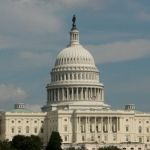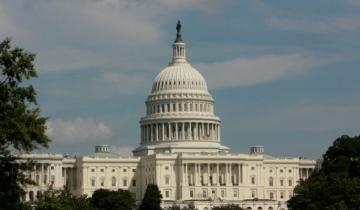On March 13, 2023, Illinois Governor Pritzker signed the Paid Leave for All Workers Act (PLFAW). In doing so, Illinois joins Nevada and Maine in mandating that paid leave can be used for any purpose. The Act allows employees to accrue and use up to 40 hours of paid leave in a 12-month period and becomes effective on January 1, 2024.
Covered Employer
The new law covers employers with one or more employees working in the state, including certain employment and labor agencies. It includes state and local government employers (excluding certain school and park districts).
Eligible Employee
PLFAW applies to every employee working for an employer in Illinois, including domestic workers, with the following exceptions:
A student enrolled in and regularly attending classes in a college or university that is also the student’s employer, and who is employed on a temporary basis at less than full-time at the college or university, but this exclusion applies only to work performed for only that college or university.
A short-term employee who is employed by an institution of higher education for less than two (2) consecutive calendar quarters during a calendar year and who does not have a reasonable expectation that they will be rehired by the same employer…in a subsequent calendar year.
Employees working in the construction industry covered by a bona fide collective bargaining agreement.
Employees covered by a bona fide collective bargaining agreement with an employer that provides--nationally and internationally--delivery services, pickup, and transportation of parcels, documents, and freight.
Employees as defined in the federal Railroad Unemployment Insurance Act or the Railway Labor Act.
Accrual and Frontloading
Accrual: PLFAW requires employees to accrue and use up to 40 hours of paid leave during the designated 12-month period. Leave is accrued at a rate of at least one hour of paid leave for every 40 hours worked, to a minimum of 40 hours in the designated 12-month period. The 12-month period is defined by the employer and must be communicated to an employee, in writing, at the time of hire. New employees must begin to accrue paid leave on their first day of employment. Employees are entitled to start using their paid leave 90 days following the commencement of their employment or March 31, 2024, whichever is later. Nothing in the Act prohibits employers from providing more than 40 hours of paid leave.
The hours worked component for exempt employees will be assumed to be 40 hours per week unless the employee’s scheduled hours are less than 40 hours per week. In this case, accrual will be based on the employee’s regular workweek.
or (directly from the statute)
Employees who are exempt from the overtime requirements of the federal Fair Labor Standards Act (29 U.S.C. 213(a)(1)) shall be deemed to work 40 hours in each workweek for purposes of paid leave accrual unless their regular workweek is less than 40 hours, in which case paid leave accrues based on that regular workweek.
Employers who accrue paid leave under the Act must carry over unused leave to a maximum of 40 hours annually.
Frontloading: Employers may also frontload paid leave at the beginning of the designated 12-month period or on the first day of employment. Employers frontloading paid leave are not required to carry over unused paid leave.
Use of Leave
Employees can use paid leave for any reason. Employers are prohibited from requiring employees to provide any documentation or certification related to the leave.
Increments of Leave
Employers may define a reasonable minimum increment of time for paid leave, not to exceed two hours per day. In cases where an employee’s scheduled workday is less than two hours, the employee’s scheduled workday may be used to determine the amount of leave.
Notice Requirements
Employee: When the need for paid leave is foreseeable, the employer may require the employee to provide advance notice of seven (7) calendar days. When the need for leave is not foreseeable, the employee must notify the employer as soon as practicable.
Employer: Employers must post a notice from the Illinois Department of Labor (not currently available). The notice should also be included in a written policy or handbook (if the employer maintains one). Employers whose workforce includes a significant number of employees who are not literate in English may contact the Illinois Department of Labor and Industry to obtain a notice in the appropriate language.
Employers may not require that the employee search for or find a replacement worker to cover the hours during which the employee takes paid leave.
Coordination with Other Leaves and Policies
Employees may not be required to use other paid leave before paid leave under the Act.
Employers with paid leave policies (vacation or PTO) that provide an equivalent or greater amount of paid leave are not required to modify their policies if their current policy allows for the use of paid time for any reason and provided that accrual and carryover requirements are the same or more generous than required by PFLAW.
Employers are required to maintain health care coverage while the employee is on paid leave.
Termination
Employers who maintain a separate PLFAW policy (and accruals and balances) are not required to pay out unused balances at an employee’s termination. The policy should clearly state that the balance is not eligible for payout at the time of termination.
When PLFAW time is part of a vacation/PTO balance or as part of a frontloaded vacation/PTO policy, the balance is payable on termination.
Recordkeeping
The PLFAW Act requires employers to maintain records that document hours worked, leave accrued and taken, and remaining leave balances. The retention period for these records is three (3) years. Employers must make these records available to the Illinois Department of Labor as required. Employers who provide paid leave on an accrual basis must provide notice of the amount of leave accrued and used by an employee upon request.
Next Steps
With a January 1, 2024, effective date, employers have ample time to prepare for the implementation of PLFAW. However, employers should start preparing now by considering how they will administer the leave–as a leave separate from any vacation or PTO policy, or as part of their current paid leave policy. Policies and/or handbooks will need to be developed or updated, and communications planned.
MRA will continue to monitor and update our guidance on PLFAW. However, in the interim, employers may find updates and the poster (when available) at the Illinois Department of Labor.






